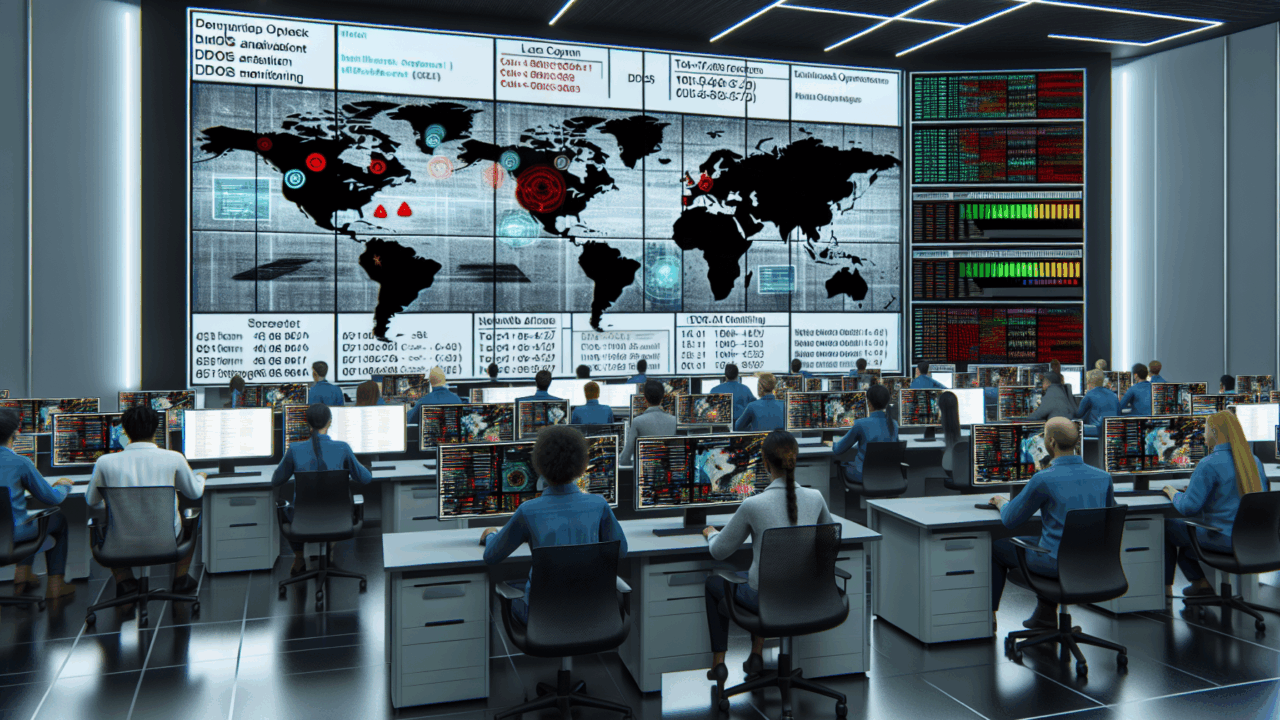In the quickly evolving world of cybersecurity, Distributed Denial of Service (DDoS) attacks are becoming more potent and frequent, with technology sectors now facing the brunt of these disruptions.
- The volume of Distributed Denial of Service (DDoS) attacks has shown a marked increase in recent years, compounding the challenges faced by technology companies.
- Previously unheard-of attack magnitudes have been recorded, with the largest peaking at an astounding 2.2 Tbps, setting a new unwanted benchmark in digital assault scales.
- These voluminous attacks underscore not only a quantitative but also a qualitative shift in the nature of threats, as attackers harness more sophisticated methods to amplify their disruptive potential.
- Factors contributing to this rise include widespread availability of botnets, advancements in offensive technology, and the proliferation of insecure IoT devices.
- The escalation in attack volume signifies a worrying trend for cybersecurity defenses, which are now necessitating continuous innovation to protect against these expanding threats.
From Gaming to Tech: A Shift in DDoS Focus
The propensity for Distributed Denial of Service (DDoS) attacks to disrupt services has seen a marked shift in focus from gaming platforms to the broader technology sector. This evolution mirrors the tech industry’s expansion and its deeper integration into the fabric of daily life. As businesses, governments, and individuals increasingly depend on technology for their critical operations and data storage, the impact potential of DDoS attacks has grown, making these assets more attractive targets. Factors contributing to this trend include:
- The tech sector’s expansive infrastructure, which presents a larger attack surface
- Greater potential for economic disruption, thereby increasing attack incentives
- Higher likelihood of paying ransoms given the critical nature of tech services
- Shifts in attacker motives, aligning more with political and economic espionage
Complexity Amplified: The New Era of Multi-Vector DDoS Offensives
- The landscape of Distributed Denial of Service (DDoS) attacks has undergone significant shifts, with modern offensives encompassing a blend of intricate methodologies. Across technology sectors, these multi-vector strategies appear designed to outmaneuver conventional defense mechanisms.
- Exploiting vulnerabilities at various layers of the OSI model, attackers now synchronize volumetric, protocol, and application-level tactics. This complexity prolongs attack durations, overwhelms multiple entry points simultaneously, and requires a more holistic approach to cybersecurity.
- Cyber defenders are consequently pushed to evolve, investing in distributed resilience and advanced detection systems that leverage machine learning and artificial intelligence to anticipate and mitigate multi-faceted threats.
- The escalation in multi-vector DDoS attacks highlights the critical need for organizations to integrate comprehensive, adaptive, and proactive defense strategies to stay ahead of these intricately woven cybersecurity challenges.
- Implement Redundancy: Use multiple data centers and servers that can handle excessive traffic if one is compromised. Regularly update DNS records for quick swapping to alternative hosting if an attack is detected.
- Deploy Advanced Firewalls: Utilize next-generation firewalls that offer integrated intrusion prevention systems and can recognize patterns specific to DDoS attack vectors.
- Layer Defense Mechanisms: Combine the power of anti-DDoS hardware and cloud-based protection services to dissipate the impact of attacks.
- Monitor Traffic Anomalies: Establish 24/7 traffic monitoring to quickly identify spikes that may signify an attempted attack, allowing for immediate response.
- Strengthen Network Architecture: Design and constantly reassess network infrastructure to ensure it is resilient to volumetric traffic attacks. Apply well-defined rules to identify and filter out malicious packets.
- Continuous Education: Train staff on the latest DDoS trends and response protocols. Hold regular simulation exercises to prepare your team for real-world attack scenarios.
- Collaborate with ISPs: Work with Internet Service Providers for additional support during an onslaught and possibly reroute traffic through scrubbing centers to cleanse data packets.
Conclusions
2025 marks a pivotal year in cybersecurity, as industry professionals must now navigate a landscape where technology firms have become the epicenter of sophisticated DDoS attacks.
Source: https://thehackernews.com/2025/09/tech-overtakes-gaming-as-top-ddos.html
